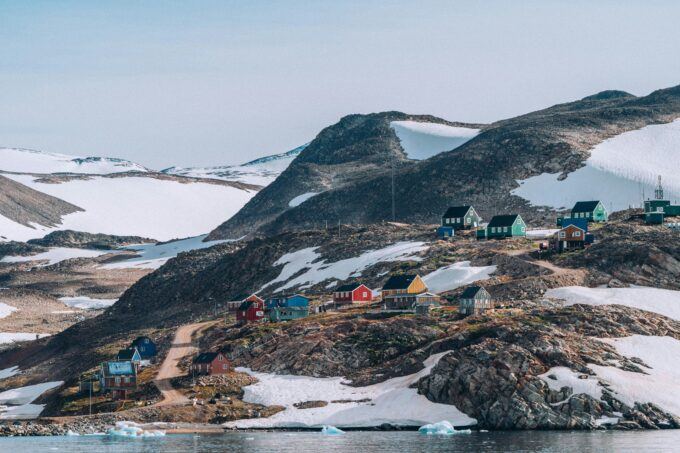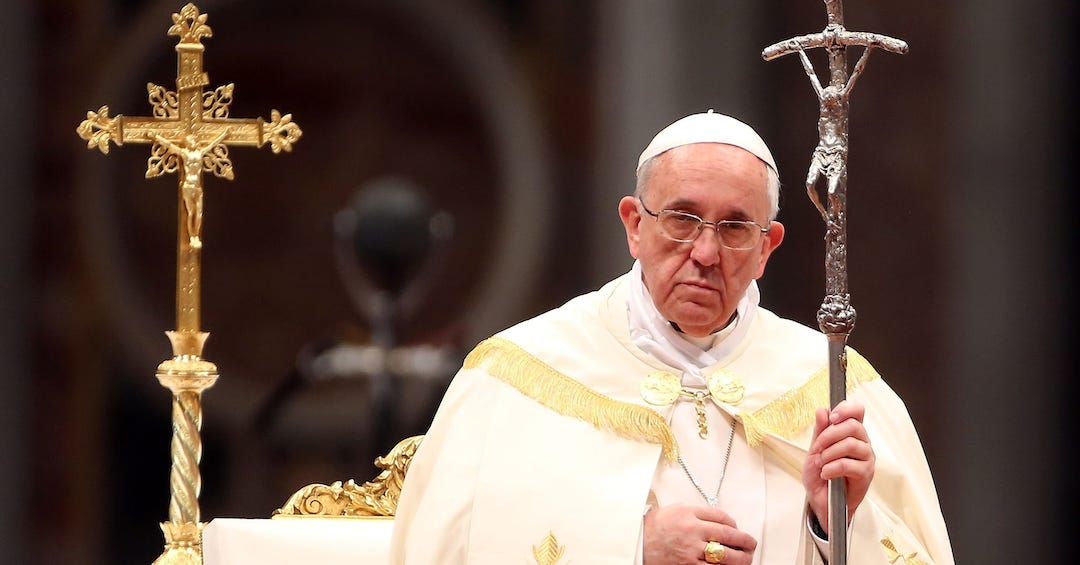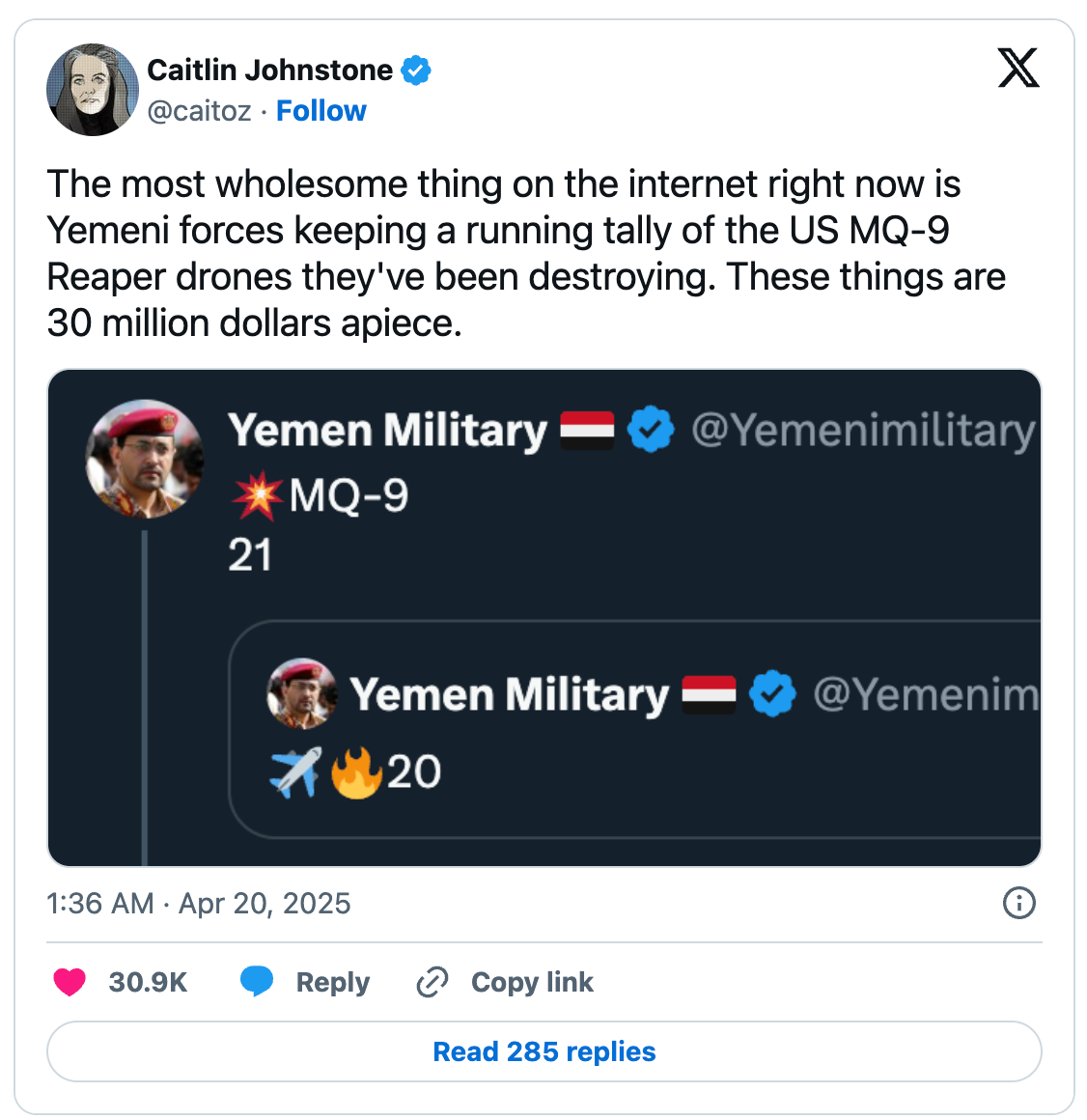There is very, very much to like about the recent (3-24-2025) article in Jacobin by Branko Milanović entitled “What Comes After Globalization?”
First, Milanović explores historical comparisons between the late-nineteenth-century expansion of global markets and trade (what he calls Globalization I and dates from 1870 to 1914) and the globalization of our time (what he calls Globalization II and dates from 1989 to 2020). The search for and exposure of historical patterns are the first steps in scientific inquiry, what Marxists mean by historical materialist analysis.
Unfortunately, many writers — including on the left — take the more recent participation of new and newly engaged producers and global traders, a revolution in logistics, the success of free-trade politics, and the subsequent explosion of international exchange as signaling the arrival of a new, unique capitalist era, even a new stage in its evolution.
Recognizing a growing share of trade in global output, but burdened with a limited historical horizon (the end of the Second World War), left theorists drew unwarranted, speculative conclusions about a new stage of capitalism featuring a decline in the power of the nation state, the irreversible domination of “transnational capital,” and even the coming of a borderless “empire” contested by an amorphous “multitude.”
Countering these views, writers like Linda Weiss (The Myth of the Powerless State, 1998) and Charles Emmerson (1913: In Search of the World Before the Great War, 2013) bring some sobriety to the question and remind us that we have seen the explosive growth of world trade before, generated by many of the same or similar historic forces. Weiss tells us that “the ratios of export trade to GDP were consistently higher in 1913 than they were in 1973.” Noting the same historical facts, Emmerson wryly concludes “Plus ça change”.
Milanović’s recognition of this parallel between two historic moments gives his analysis a gravitas missing from many leftists, many self-styled Marxist interpretations of the globalization phenomenon.
Secondly, Milanović — an acknowledged expert in comparative economic inequality — makes an important observation regarding the asymmetry between Globalization I and II. While they are alike in many ways, they differ in one important, significant way: while Globalization I benefited the Great Powers at the expense of the colonial world, the workers in the former colonies were actually benefited by Globalization II. In Milanović’s words:
Replacing domestic labor with cheap foreign labor made the owners of capital and the entrepreneurs of the Global North much richer. It also made it possible for the workers of the Global South to get higher-paying jobs and escape chronic underemployment… It is therefore not a surprise that the Global North became deindustrialized, not solely as the result of automation and the increasing importance in services in national output overall, but also due to the fact that lots of industrial activity went to places where it could be done more cheaply. It’s no wonder that East Asia became the new workshop of the world.
While he misleadingly uses the expression “coalition of interests,” Milanović elaborates:
This particular coalition of interests was overlooked in the original thinking regarding globalization. In fact, it was believed that globalization would be bad for the large laboring masses of the Global South — that they would be exploited even more than before. Many people perhaps made this mistake based on the developments of Globalization I, which indeed led to the deindustrialization of India and the impoverishment of the populations of China and Africa. During this era, China was all but ruled by foreign merchants, and in Africa farmers lost control over land — toiled in common since time immemorial. Landlessness made them even poorer. So the first globalization indeed had a very negative effect on most of the Global South. But that was not the case in Globalization II, when wages and employment for large parts of the Global South improved.
Milanović makes an important point, though it risks exaggeration by his insistence that because Globalization II brought a higher GDP per worker, the workers are better off and exploited less.
They may well be better off in many ways, but they are likely exploited more.
Because he forgoes a rigorous class analysis, he assumes that gain in GDP per worker goes automatically to the worker. Most of it surely does not; if it did, capital would not have shifted to the Global South. Instead, most of the GDP per capita goes to the capitalist — foreign or domestic. Capital would not migrate to the former colonies if it garnered a lower rate of exploitation.
But engagement with manufacturing in Globalization II, rather than resource extraction or handicraft, certainly provides workers in the former colonies with greater employment, better wages, and more opportunity to parlay their labor power into a more advantageous position — a fact that nearly all development theorists from right to left should concede.
Structural changes in capitalism — the rapid mobility and ease of mobility of capital, the opening of new lower wage markets, a revolution in the means and costs of transportation — have shifted manufacturing and its potential benefits for workers from its location in richer countries to a new location in poorer countries, creating a new leveling between workers in the North and South.
Denying or neglecting this reality has led many leftists — like John Bellamy Foster — to support the “labor aristocracy” thesis as a reason to ignore or demean the potentially militant role of workers in the advanced capitalist countries. As one of the strongest voices in support of the revolutionary potential of the colonial workers and peasants, Lenin was scathingly critical of elements of the working class who were indirectly privileged by the wealth accumulated from the exploitation of the colonies. Those “labor aristocrats” constituted an ideological damper on the class politics of Lenin’s time (and even today), but by no means gave a reason to deny the class’s revolutionary potential. Certainly, the ruling classes of the Great Powers employed that relative privilege and many other ploys to further exploit their domestic workers to the fullest extent and discourage their rebellion.
Bellamy and others want to deny the revolutionary potential of the workers in the advanced capitalist countries in order to support the proposition that the principal contradiction today is between the US, Europe, and Japan and the countries of the Global South. Bellamy endorses the Monthly Review position taken as far back as the early 1960s: “Some Marxist theorists in the West took the position, most clearly enunciated by Sweezy, that revolution, and with it, the revolutionary proletariat and the proper focus of Marxist theory, had shifted to the third world or the Global South.”
While frustration with the lack of working-class militancy (worldwide) is understandable and widespread, it does not change the dynamics of revolutionary change — the decisive role of workers in replacing the existing socio-economic system. Nor does it dismiss the obligation to stand with the workers, the peasants, the unemployed, and the déclassé wherever they may be — within either the Great Powers or the former colonies.
Just as revolutionary-pessimism fostered the romance of third-world revolution among Western left-wing intellectuals in the 1960s, today it is the foundation for another romantic notion — multipolarity as the rebellion of the Global South. Like its Cold War version, it sees a contradiction between former colonies and the Great Powers of our time as superseding the contradiction between powerful monopoly corporations and the people.
Of course, richer capitalist states and their ruling classes do all they can to protect or expand any advantages they may enjoy over other states — rich or poor — including economic advantages. But for the workers of rich or poor states, the decisive question is not a question of sovereignty, not a question of defending their national bourgeoisie, or their elites, but of ending exploitation, of combatting capital.
The outcome of the global competition between Asian or South American countries and their richer Western counterparts over market share or the division of surplus value has no necessary connection with the well-being of workers in the sweatshops of the various rivals. This is a fact that many Western academics seem to miss.
Thirdly, Milanović clearly sees the demise of Globalization II — the globalization of our time:
The international wave of globalization that began over thirty years ago is at its close. Recent years have seen increased tariffs from the United States and the European Union; the creation of trade blocs; strong limits on the transfer of technology to China, Russia, Iran, and other “unfriendly” countries; the use of economic coercion, including import bans and financial sanctions; severe restrictions on immigration; and, finally, industrial policies with the implied subsidization of domestic producers.
Again, he is right, though he fails to acknowledge the economic logic behind the origins of Globalization II, the conditions leading to its demise, and the forces shaping the post-globalization era. For Milanović, globalization’s end comes from policy decisions — not policy decisions forced on political actors — but simply policy preferences: “Trump fits that mold almost perfectly. He loves mercantilism and sees foreign economic policy as a tool to extract all kinds of concessions…” Thus, Trump’s disposition “explains” the new economic regimen; we need to look no deeper.
But Trump did not end globalization. The 2007-2009 economic crisis did.
Globalization was propelled by neoliberal restructuring combined with the flood of cheap labor entering the global market from the “opening” of the People’s Republic of China and the collapse of Eastern Europe and the USSR. Cheaper labor power means higher profits, everything else being the same.
With the subsequent orgy of overaccumulation and capital running wildly looking for even the most outlandish investment opportunities, it was almost inevitable that the economy would crash and burn from unfettered speculation.
And when it did in 2007-2009, it took trade growth with it and marked “paid” on globalization.
As I wrote in 2008:
As with the Great Depression, the economic crisis strikes different economies in different ways. Despite efforts to integrate the world economies, the international division of labor and the differing levels of development foreclose a unified solution to economic distress. The weak efforts at joint action, the conferences, the summits, etc. cannot succeed simply because every nation has different interests and problems, a condition that will only become more acute as the crisis mounts…
“Centrifugal forces” generated by self-preservation were operant, pulling apart existing alliances, blocs, joint institutions, and common solutions. Trade agreements, international organizations, regulatory systems, and trust greased the wheels of global trade; distrust, competition, and a determination to push economic problems on others threw sand on those wheels.
Anticipating the period after the demise of globalization, I wrote in April of 2009:
To simplify greatly, a healthy, expanding capitalist order tends to promote intervals of global cooperation enforced by a hegemonic power and trade expansion, while a wounded, shrinking capitalist order tends towards autarky and economic nationalism. The Great Depression was a clear example of heightened nationalism and economic self-absorption.
The aftermath of the 2007-2009 Great Recession was one such example of “a wounded, shrinking capitalist order.” And predictably, autarky and economic nationalism followed.
The tendency was exacerbated by the European debt crisis that drove a wedge between the European Union’s wealthier North and the poorer South. Similarly, Brexit was an example of the tendency to go it alone, substituting competition for cooperation. Ruling classes replaced “win-win” with zero-sum thinking.
The pace and intensity of international trade has never recovered.
While Milanović does not attend to it, this cycle of capitalist expansion, economic crisis, followed by economic nationalism (and often, war) recurs periodically.
In the late-nineteenth century, the global economy saw a vast restructuring of capitalism, with new technologies and rising productivity (and concomitant rises in rates of exploitation).The era also saw what economists cite as “a world-wide price and economic recession” from 1873 to 1879 (the Long Depression). In its wake, protectionism and trade wars broke out as everyone tried to dispose of their cheaper goods in other countries, only to be met with tariff barriers.
The imperialist “scramble for Africa” — so powerfully described by John Hobson and V. I. Lenin — raised the intensity of international competition and rivalry, while generating the foundation for economic growth and global trade with newly acquired colonies. This is the period that Milanović characterizes as Globalization I. A further aspect and stimulus of the rebirth of growth and trade was the massive armament programs mounted by the Great Powers. The unprecedented armament race — the “Dreadnought race” — served as an engine of growth, while exponentially increasing the danger of war (from 1880 to 1914 armament spending in Germany increased six-fold, in Russia three-fold, in Britain three-fold, in France double, source: The Bloody Trail of Imperialism, Eddie Glackin, 2015).
One could argue, similarly, that the 1930s were a period of depression and economic nationalism, following a broad, exuberant economic expansion. And as with the pre-World War I Globalization I, the contradictions were resolved with World War.
Is War our Destiny after the Demise of Globalization II?
Certainly, the historical parallels cited above suggest that wars often follow pronounced economic disruptions and the consequent rise of economic nationalism, though we must remember that events do not follow a mechanical pattern.
Yet if history is a great teacher, it certainly looks like the mounting contradictions of today’s capitalism point to intensifying rivalry and conflict. A March 24 Wall Street Journal headline screams: Trade War Explodes Across World at a Pace Not Seen in Decades!
The article notes that the infamous Smoot-Hawley (tariff) Act of 1930– a response to the Great Depression– was only rescinded after the war.
It also notes — correctly — that tariffs are not simply a Trump initiative. As of March 1, the Group of 20 have imposed 4500 import restrictions — up 75% since 2016 and increased 10-fold since 2008.
The World Trade Organization, responsible for organizing Globalization II has failed its calling. As the WSJ reports:
In February, South Korea and Vietnam imposed stiff new penalties on imports of Chinese steel following complaints from local producers about a surge of cut-price competition. Similarly, Mexico has begun an antidumping probe into Chinese chemicals and plastic sheets, while Indonesia is readying new duties on nylon used in packaging imported from China and other countries.
Even sanctions-hit Russia is seeking to stem an influx of Chinese cars, despite warm relations between Russian President Vladimir Putin and Chinese leader Xi Jinping. Russia in recent weeks increased a tax on disposing of imported vehicles, effectively jacking up their cost. More than half of newly sold vehicles in Russia are Chinese-made, compared with less than 10% before its 2022 invasion of Ukraine.
As tensions mount on the trade front, rearmament and political tensions are growing. War talk mounts and the means of destruction become more effective and greater in number. The US alone accounts for 43% of military exports worldwide, up from 35% in 2020. France is now the number two arms exporter, surpassing Russia. And, in over a decade, NATO has more than doubled the value of weapons imported.
European defense spending is expanding at rates unseen since the Cold War, in some cases since World War II. According to the BBC, “On 4 March European Commission President Ursula Von der Leyen announced plans for an €800bn defence fund called The ReArm Europe Fund.” Germany has eliminated all restraints on military spending in its budget. Likewise, the UK plans to increase military spending to 2.5% of GDP in the next two years, while Denmark is aiming for 3% of GDP in the same period (growth rates consistent with those of the Great Powers before World War I, except for Germany).
Dangerously, centrist politicians in the EU are beginning to see rising military spending as a boost to a stuttering economy. As military Keynesianism takes hold, the possibility of global war increases, especially in light of the shifting alliances in the proxy war in Ukraine.
Even more ominously, Europe’s two nuclear powers — France and the UK — are seriously discussing the development of a European nuclear force independent of the US-controlled NATO nuclear capability.
At the same time, the incoming chair of the US Joint Chiefs of Staff announced readiness to supply more NATO powers with a nuclear capacity.
As war cries intensify, the EU Commission has issued a guidance that EU citizens should maintain 72 hours of emergency supplies to meet looming war dangers.
Of course, the continually escalating wave of tariffs, sanctions, and hostile words directed at The People’s Republic of China by the US and its allies threatens to break into open conflict and wider war, a war for which the PRC is quite understandably actively preparing.
As with previous World Wars, it is not so much — at this moment — who is right or wrong, but when the momentum toward war will become irreversible. Another imperialist war — for, in essence, that is what it would be — will be an unimaginable disaster. No issue is more vital to our survival than stopping this momentum toward global war.
The post
Globalization, its Demise, and its Consequences first appeared on
Dissident Voice.
This content originally appeared on Dissident Voice and was authored by Greg Godels.
This post was originally published on Radio Free.

















